
Jess Goddard
BSW (Bachelor of Social Work)
Note — The article was checked and updated February 2024.
Smiling should be considered a superpower, for our mind and body. Yet, (like many superheroes as they start) we are still to learn how to use smiling, directly and indirectly, to affect our wellbeing.
Research shows that smiling has therapeutic effects, such as
- Extended life span
- Boosting our mood
- Reducing stress
- Boosting our immune system
- Reducing pain
- Increasing endurance
The “funny” thing about smiling is that to get all the health benefits, the smile itself does not need to be genuine. But first, let’s understand more about why exactly we smile.
Why do we smile?
When we feel joy and happiness, our body’s natural response is to express this warm feeling through a smile. Whether that be running into an old friend, getting an A on that test or catching a beautiful sunrise.
When our brain feels happy it produces endorphins and other feel good hormones, and neural signals are then transmitted to our facial muscles to trigger a smile.
RELATED — Introduction to: Brain Health

This has been dubbed as the positive feedback loop of happiness, because when our smiling muscles contract they stimulate our reward system by firing a signal back to the brain, which further increases our level of happy hormones.[1]
“Sometimes your joy is the source of your smile, but sometimes your smile can be the source of your joy.”[2]
― Zen Master Thich Nhat Hanh
When do we start smiling for the first time?
Research shows us that smiling is actually hardwired and can be performed without any previous experience. We know this by 4D ultrasonography, and the technology’s ability to capture babies smiling in the womb, some as young as 22 weeks![3]
Smiling is an innate behavior
When babies are born they continue to smile, at first mostly in their sleep, but starting between 6 to 8 weeks they develop their “social smile”.[4]

Also, babies who are blind from birth give us more evidence that smiling is innate. With no ability to mimic facial expressions, they will smile in response to their mother or father’s voice, from around the 4th week of being born!
As they get older, tactile and kinesthetic stimulation such as tickles and bouncing on a knee will also evoke a big bright smile.[5]
Although we are born with the ability to smile, it seems that as we get older we smile less often. Around 30% of us smile more than 20 times per day, whereas 14% of us smile less than 5. Children, on the other hand, smile an average of 400 times per day![6]
Research behind smiling
University of California, Berkeley completed a 30-year longitudinal study that examined the positive emotional expressions of 20 – 21-year-old women who were photographed in the Mills College year book of 1958 and 1960.
By measuring the students’ smiles, researchers were able to predict how
- fulfilling and long-lasting their marriages would be
- their well being and success in life
Results showed that women who displayed a brighter smile in their photograph were
- more likely to be married by age 27
- less likely to remain single into middle adulthood
- more likely to have satisfying marriages 30 years later
These women were also feeling more satisfied with their lives, and scored higher on wellbeing at ages 21, 27, 43 and 52.[7]
In 2010 a research project was undertaken by Wayne State University which looked into baseball cards of Major League Baseball players who debuted prior to 1950.
The focus was on whether the smile span and intensity in the players’ photographs could predict their lifespan.
A total of 230 photographs were used in the research project and were placed into different stacks – no smile, partial smile, or a full beaming smile.
Research found that:
- players who did not smile lived an average of 72.9 years
- players with a slight smile lived an average of 75 years
- players with beaming smiles lived an average of almost 80 years.[8]
Over 50 years ago, Paul Ekman conducted an experiment to demonstrate the existence of universal facial expressions, which made him one of the most acclaimed psychologists of our time.
Ekman went to Papua New Guinea where he studied members of the Fore people of the Southeast Highlands. As a part of his experiment, he placed photos of people’s faces with different emotional expressions in front of the observers, told them a story about a particular emotion and asked the observers to pick the picture which best fit the story.
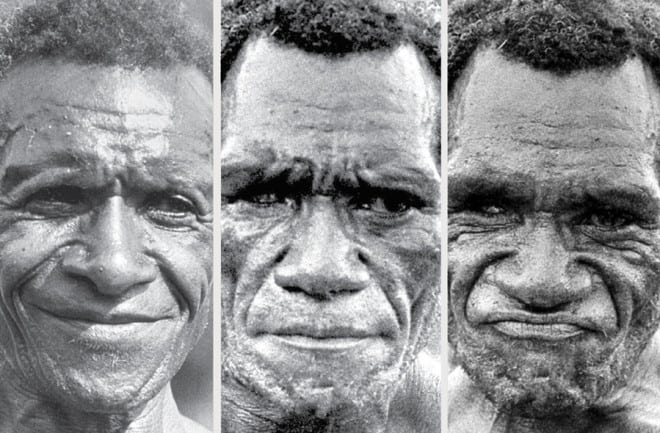
Source: Paul Ekman Group
After matching everything correctly, the results were evident and supported the notion of universal expressions of emotion; happiness, anger, sadness, contempt, fear, surprise and disgust.[9]
What are the different types of smiles?
A simple and instinctive action such as a smile has so much to offer and could be one of the most interesting, complex and powerful facial expressions we have to share.
Research shows there are predominantly three kinds of smiles:
- smiles of affiliation (reassuring others, being polite)
- smiles of reward (positive emotions, states of happiness)
- smiles of dominance (perceiving as being superior).[10]

Here are the 10 most common types of smiles:
- The Reward Smile
- Affiliative Smile
- Dominance Smile
- Lying Smile
- Wistful Smile
- Polite Smile
- Flirtatious Smile
- Embarrassed Smile
- Pan Am Smile
- Duchenne Smile[10]
The most genuine and common smile is known as the Duchenne smile, named after Guillaume Duchenne, a French anatomist.
Duchenne’s research on smiling
In the 1860’s, after undertaking (unusual) physical experiments by stimulating facial muscles with electrical current, Duchenne discovered that there is a key difference between a “real” and “fake” or polite smile.
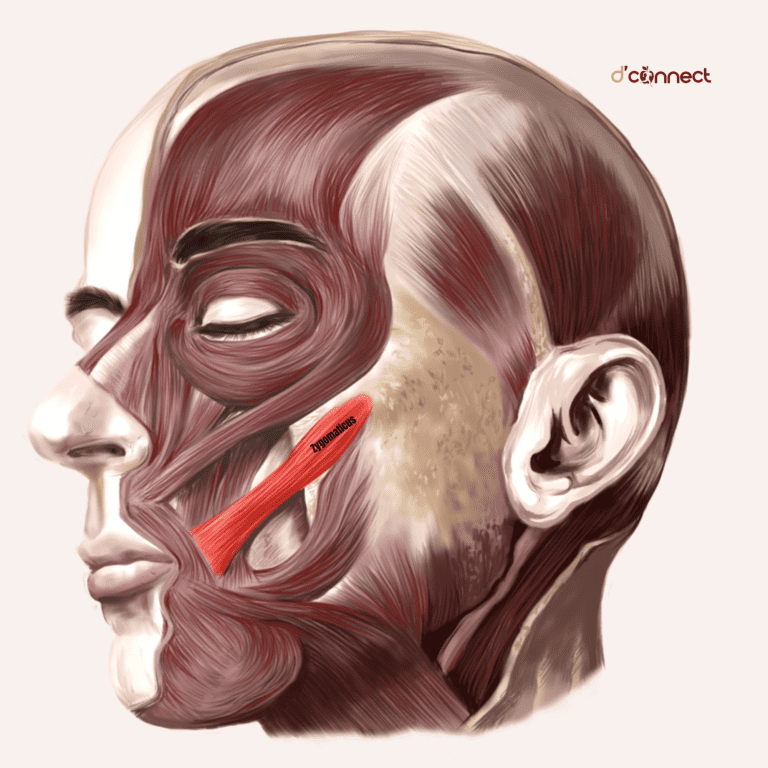
Non-Duchenne smiles mainly involve the contraction of the zygomaticus major muscles which lifts the corners of the mouth, and we can activate this whenever we want.
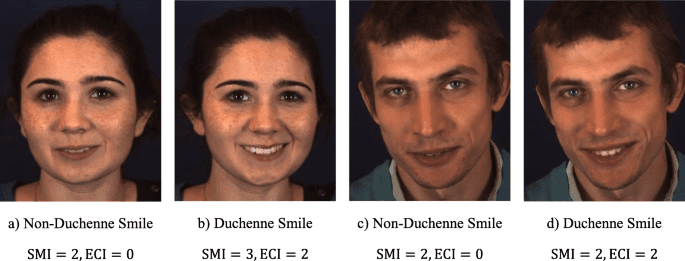
A Duchenne smile (a proper smile) involves the contraction of the orbicularis oculi. This is said to be the involuntary muscle that wraps around the eyes, crumpling up the skin and forming crows feet. The Duchenne smile features both actions.[11]
Health benefits of smiling
The good news is that we don’t have to rely on a proper (real) smile to feel the benefits. Taking a conscious moment to action a quick smile can have us reaping similar rewards as if the smile was genuine.
We can “trick” the brain into thinking we’re happy
A study from the University of South Australia found that participants who held a pen between their teeth, replicating a smile, generated more positive emotions.[12]
Health benefits of smiling include:
- Boosting our mood
- Reducing stress
- Boosting our immune system
- Increasing productivity
- Reducing pain
- Increasing endurance
- Increasing attractiveness
Mood booster
When we smile and flex certain muscles in our face, our body releases three feel good hormones, which are endorphins, dopamine and serotonin.
These neurotransmitters help elevate our mood, alleviate stress and relax our body.[13]
Reducing stress
When the feel good hormones are released, they can decrease stress hormones such as cortisol and adrenaline.
RELATED — Understanding Stress: The Silent Killer
Participants from a Midwestern University took part in a study where they were unbeknowingly undertaking two stress inducing activities whilst holding chopsticks in their mouth, creating different facial expressions.

Results showed that those with an unintentional smile had lower heart rate levels after recovery from the activity compared to those with neutral faces.
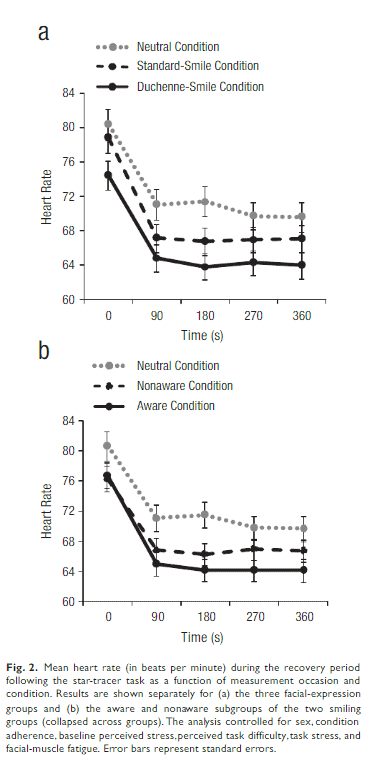
This means that smiling during a stressful moment could in fact help us psychologically and physically too![14]
Boosting our immune system
Our facial expressions and positive emotions can enhance the effectiveness of our body’s natural defenses.
When we smile, our body releases dopamine which activates certain parts of our immune system. When our dopamine levels rise, we also have an increase in our natural killer cells and antibodies.[15]
Smiling can be very beneficial for our immune system
Increasing productivity
Research shows that smiling and laughing at work has profound benefits, as higher rates of happiness in the workplace can correlate with greater productivity and performance, giving us:
- greater energy
- faster promotions
- better reviews
- higher incomes
Seeing as we spend most of our week in the work environment, why not reap the benefits of trying to make it as enjoyable as possible with an extra smile or two.[16]
Reducing pain and increasing endurance
Endorphins are our very own natural painkillers, providing us with moderate pain-relieving benefits.
A study that analyzed pain levels on individuals that were receiving an injection found probable correlations between pain and smiling, as those who smiled during their injection reported it only hurt about half as much as those who were not smiling.

Speaking of pain, when we are exercising, we often think about how hard our body is working, despite how difficult that exercise might actually be. This is known as perceived effort.
Smiling can help decrease perceived effort and increase our athletic performance.
One particular study found that when runners deliberately smiled during their workouts they used less energy, and others who frowned during their run reported a higher perceived effort.[17]
Attractiveness
With all the physical and mental health benefits that smiling provides, research suggests that it can also make us more attractive in the eyes of others.
Evidence of this was shown in a Swiss study where participants were presented with faces varying in happiness and attractiveness.[18]
Attractiveness is strongly influenced by the intensity of a smile
Smiling increases our attractiveness to others, and it is also considered as a sign of trustworthiness and intelligence.[19]
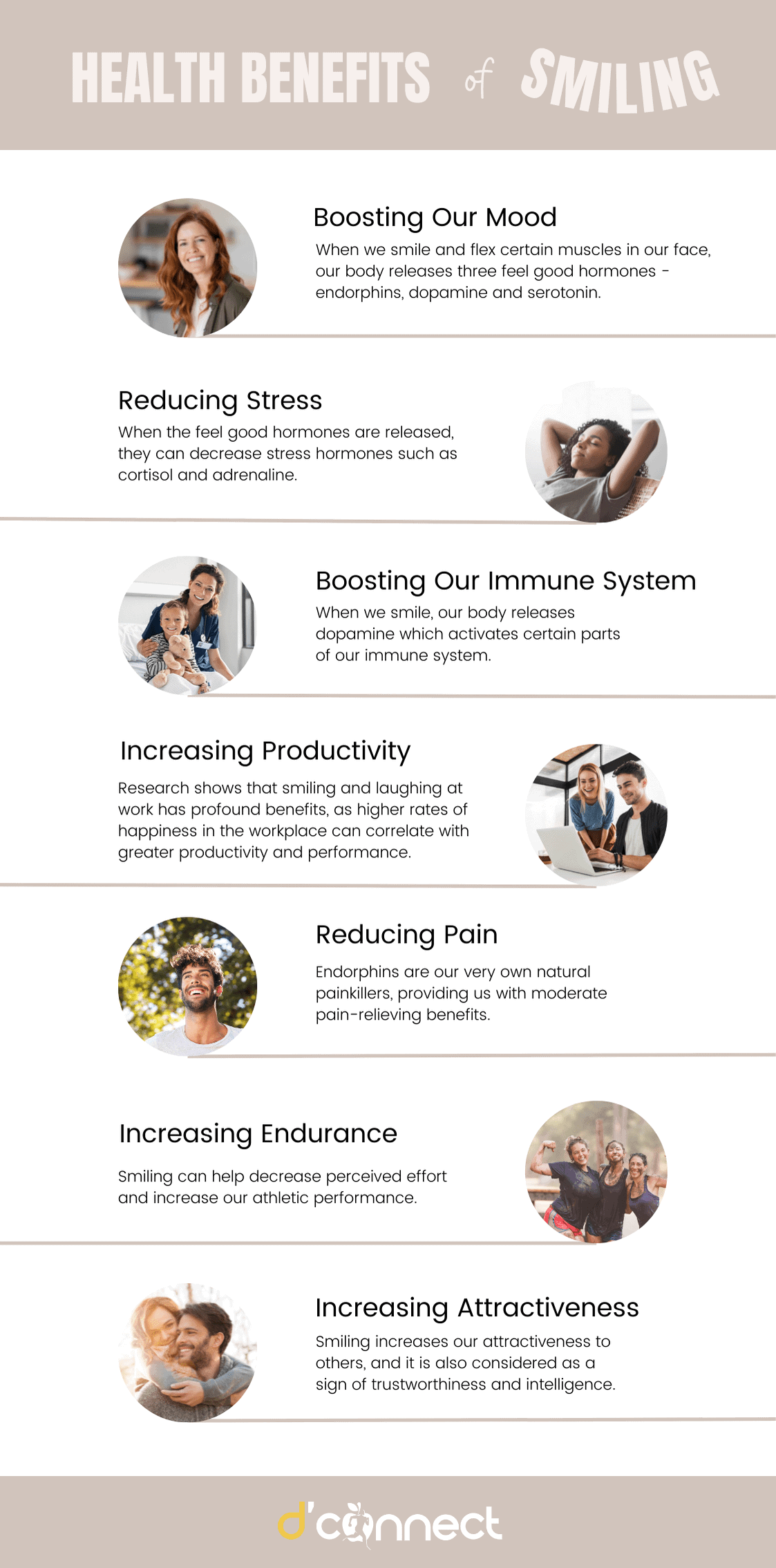
Alongside this plethora of health benefits, British research carried out by Hewlett Packard shows us that a simple smile can also be worth far more than material pleasures.
Around 100 adult volunteers had their brain and heart activity monitored whilst being shown different stimuli to create a “mood boosting value”.
The volunteers were:
- shown photos of family and friends smiling
- given money and chocolate
Results revealed that participants who viewed a child’s smile had a whopping stimulation equivalent to receiving 16,000 pounds in cash, or eating 2,000 chocolate bars!
Psychologist Dr David Lewis who analyzed the clinical tests stated that when someone important in our lives smiles and we smile back, powerful emotions are triggered that change our brain chemistry.[20]
Share a smile and make the other person happy as well
Smiling can activate another person’s orbitofrontal cortex, which is the region in the brain that processes sensory rewards. So when we share a smile with another person, they can actually feel rewarded.[21]
5 ideas to put a smile on your face in less than 5 minutes
- Listen to your favourite song, maybe even add a boogie too.
- Call someone you love and tell them you love them too.
- Spend time in nature, with animals, babies, or sun basking.
- Eat something delicious and/or watch something you find hilarious.
- Immerse yourself in gratitude – what are you proud of this week, what made you feel good, or do a kind act of service to a stranger.
If you are interested in more similar articles, please see our Mental Health page.
Jess is a fully registered Social Worker with the SWRB, and has completed her Bachelor’s Degree with the University of Auckland. For the past 3 years, Jess has been working as a Mental Health Clinician in a High and Complex Needs Residential Unit. She is also in the process of furthering her studies, focusing on Sound Therapy certification.
Through theoretical knowledge and first-hand experience, Jess knows the serious impact that mental health can have on all areas of our life, and is passionate about empowering and educating people so they can achieve their own optimal mental wellbeing.
If you would like to connect with Jess, please do so via her LinkedIn profile – Jess Goddard.
References
(1) Li, D. (2014). What’s the science behind a smile?. Retrieved from https://www.britishcouncil.org/voices-magazine/famelab-whats-science-behind-smile#:~:text=This%20is%20the%20start%20of,smile%2C%20our%20brain%20feels%20happier
(2) Five Teachings to Live by from Thich Nhat Hanh. (n.d). Retrieved from https://fractalenlightenment.com/40649/inspirational/five-teachings-live-thich-nhat-hanh
(3) Kawakami, F., & Yanaihara, T. (2012). Smiles in the fetal period. Infant Behaviour and Development. 35(3), 466-471. doi: https://doi.org/10.1016/j.infbeh.2012.04.002
(4) Zamosky, L. (2021). Baby’s First Social Smile. Retrieved from https://www.webmd.com/parenting/baby/babys-first-social-smile#:~:text=Your%20Baby’s%20Development%20This%20Week&text=Sometimes%20a%20smile%20in%20the,This%20is%20an%20important%20milestone.
(5) Valente, D., Theurel, A., & Gentaz, E. (2017). The role of visual experience in the production of emotional facial expressions by blind people: a review. PubMed Central, 25(2), 483–497. Retrieved from https://www.ncbi.nlm.nih.gov/pmc/articles/PMC5902524/#:~:text=From%20the%204th%20week%20of,be%20detected%20%20concerning%20its%20development
(6) Gutman, R. (2011). The power of smiling. Retrieved from https://www.ted.com/talks/ron_gutman_the_hidden_power_of_smiling
(7) Harker, L., & Keltner D. (2001) Expressions of Positive Emotion in Women’s College Yearbook Pictures and Their Relationship to Personality and Life Outcomes Across Adulthood. Journal of Personality and Social Psychology, 80, 112–124.
(8) Abel E., & Kruger M. (2010) Smile Intensity in Photographs Predicts Longevity. Psychological Science, 21, 542–544.
(9) Ekman, P. (1970). Universal Facial Expressions of Emotions. California Mental Health Research Digest, 8(4), 151-158. Retrieved from https://www.paulekman.com/wp-content/uploads/2013/07/Universal-Facial-Expressions-of-Emotions1.pdf
(10) Stanborough, R.J. (2019). Beyond Real and Fake: 10 Types of Smiles and What They Mean. Retrieved from https://www.healthline.com/health/types-of-smiles#social-function
(11) Duchenne smile. (n.d.). Retrieved from https://www.newscientist.com/definition/duchenne-smile/#:~:text=All%20smiling%20involves%20contraction%20of,the%20eyes%20into%20crows’%20feet.
(12) Scipioni, J. (2020). This simple tactic can ‘trick’ your brain into feeling happier, researchers say. Retrieved from https://www.cnbc.com/2020/08/21/simple-trick-that-can-make-you-happier-according-to-research.html#:~:text=According%20to%20a%20recent%20study,into%20thinking%20you’re%20happy.
(13) Psychology To Grin About: The Benefits Of Smiling And Laughter. (2019). Retrieved from https://online.uwa.edu/news/benefits-of-smiling-and-laughter/
(14) Grin and Bear It! Facilitates Stress Recovery. (2012).
(15) Freiherz, S. (2020). Why smiling strengthens the immune system. Retrieved from https://www.spermidinelife.com/en/smiling-immune-system/#:~:text=Similarly%2C%20a%20small%20smile%20triggers,body’s%20defense%20and%20our%20health
(16) Start Smiling: It Pays To Be Happy At Work. (2010). Retrieved from https://www.forbes.com/2010/08/13/happiest-occupations-workplace-productivity-how-to-get-a-promotion-morale-forbes-woman-careers-happiness.html?sh=351c709aefb4
(17) 11 Science-Backed Health Benefits of Smiling. (2020). Retrieved from https://auraglow.com/blog/benefits-of-smiling
(18) Golle, J., Mast., F.W & Lobmaier, J.S. (2013). Something to smile about: The interrelationship between attractiveness and emotional expression. Cognition and Emotion, 28(2), 298-310. Retrieved from https://www.researchgate.net/publication/251151493_Something_to_smile_about_The_interrelationship_between_attractiveness_and_emotional_expression
(19) Horn, S., Matuszewska, N., & Gkantidis, N., Verna, C., & Kanavakis, G. (2021). Smile dimensions affect self-perceived smile attractiveness. Scientific Reports, 11(2779). doi: https://doi.org/10.1038/s41598-021-82478-9
(20) Psychology To Grin About: The Benefits Of Smiling And Laughter. (2019). Retrieved from https://online.uwa.edu/news/benefits-of-smiling-and-laughter/
(21) There’s magic in your smile. (2012). Retrieved from https://www.psychologytoday.com/nz/blog/cutting-edge-leadership/201206/there-s-magic-in-your-smile






